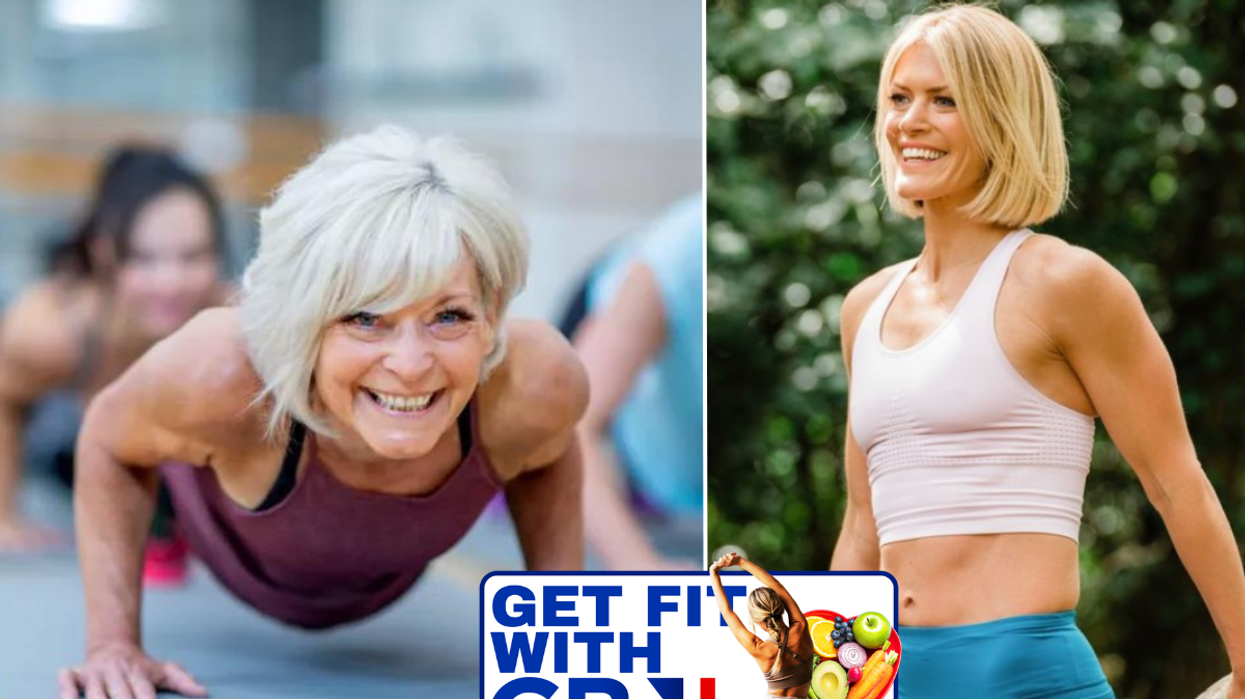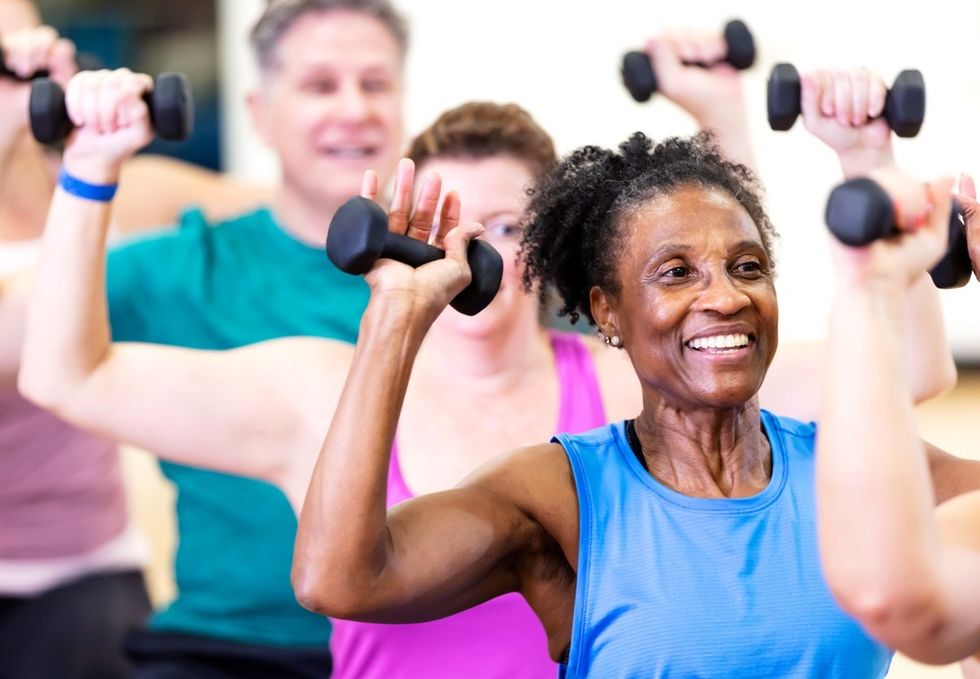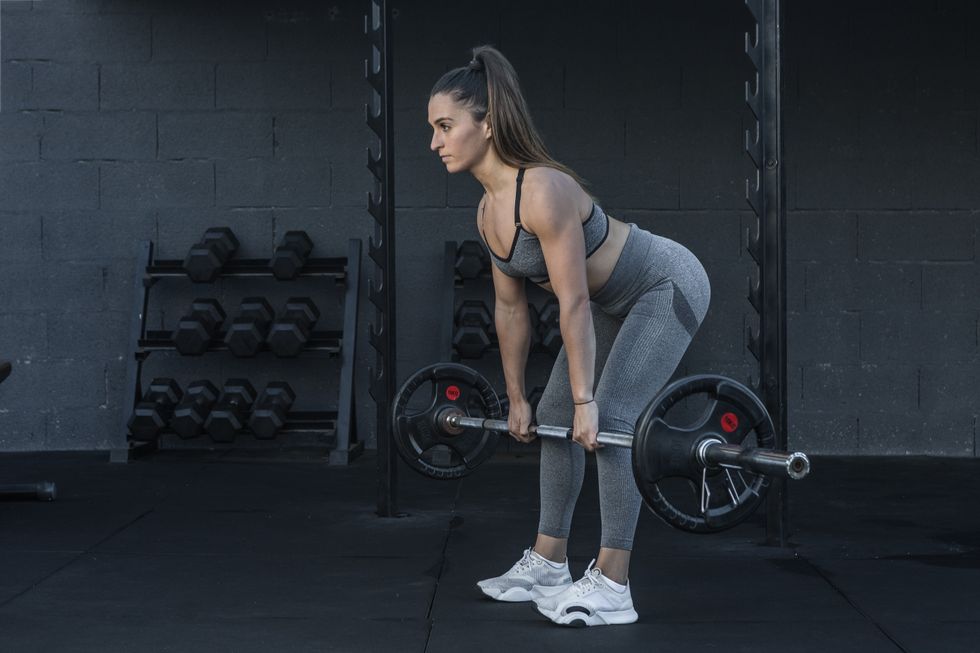PT's 20-minute workouts to build strength and feel a 'huge difference' during menopause - results in 4 weeks

A personal trainer shared a workout guide
|GETTY/Emma Simarro

GB News is sharing the best workout plans and diet advice to help burn fat and transform your body. This week, a personal trainer shares a plan perfect for women during perimenopause
Don't Miss
Most Read
Incorporating strength movements into your workout plan is great for building muscle, boosting the metabolism and helping you feel great.
A personal trainer has shared three 20- to 30-minute workouts that can give women "huge" results within weeks.
Award-winning personal trainer and founder of Building Body Confidence Emma Simarro said: "You will feel a huge difference if you do each of these workouts once a week for four to six weeks.
"Keeping it simple is key. Each workout incorporates all the major movement patterns our bodies perform every day; from squats to pulling movements, hinges to presses.
"They should take 20 to 30 minutes to complete, which, in the grand scheme of things is a tiny snippet of your day that will help you feel more energised, happier and empowered."

Shoulder presses can build upper body strength
| GETTYShe recommended doing 8-12 reps of each exercise, three times through and beginning with bodyweight to get the technique down.
If the reps are manageable but the last 2-3 reps feel challenging, this is a good indicator you are using the right size weights.
Emma said: "To be effective, we need to push for the last few reps of every set without losing our form and technique. But they should feel really hard." Take a short break between each set, think 30-60 seconds.
Workout One
Emma said: "This is a great full-body workout, targeting all major muscle groups."
- Squat
- Shoulder Press
- Glute Bridge
- Floor press
- Bent over rows
- Deadbugs
Workout Two
"Another full body workout that focuses on deadlifts, a dominant hinge pattern and push up practice," Emma added.
- Deadlifts
- Lateral Raise
- Reverse Lunges (repeat each side)
- Woodchoppers (repeat each side)
- Renegade Rows
- Push up
Workout Three
The PT added: "Workout three includes Bulgarian split squats (if you know, you know) and some exercises that require a chair or stool."
- Bulgarian Split Squats
- Single Arm Row
- Step Ups
- Chest Fly
- Bent Over Fly
- Shoulder Taps
Tips to get started
Technique is key
Emma added women should start with bodyweight first to ensure the right technique. She continued: "Breathing is important, helping us control the movement and engage our core muscles. The general rule is to 'exhale on exertion' so you breathe out on the part that requires the effort.
"In a squat, that would mean taking a deep breath at the top/on the way down and breathing out as you stand up.
"However, there are exceptions to this. For example, women with pelvic floor dysfunction may prefer to breathe out fully before completing the effort part of the exercise as this enables them to engage their pelvic floor more effectively.
"Play around with it but if you have any concerns here, please consult a professional to help you."
Form
Emma said: "Form is key when lifting weights and some cues I like to use include - roll your shoulders back and down, creating distance between your ears and shoulders.
"Lift through your chest, as if you are lifting it to the sky.
LATEST DEVELOPMENTS
 Deadlifts are great moves to target the legs | GETTY
Deadlifts are great moves to target the legs | GETTY"We want to stand tall and proud. As you take a deep breath, gently connect the front of your hips up to your ribcage, drawing your belly button to your spine.
"It shouldn't feel like 'sucking in', more like 'drawing up'. I want you to feel like you are zipping up a life jacket.
"Find a neutral hip position by tilting your pelvis back and forth, helping you find a middle position. This will be your neutral position."
Modifications
Emma said: "We all have different needs and abilities, which means it's likely we will have to modify an exercise from time to time. Not everyone will start doing a full push up, for example.
"But it's one of the reasons I love strength training; there's always an option for everyone and we build it up over time. It's nice to work on something and see improvement, it's all part of the challenge.
"The below modifications are to give you an idea of how to structure a workout.
"Common modifications include:
- Use lower weights or start with bodyweight
- Reduce the range of motion
- Use elevated surfaces or walls (e.g. push-ups)
- Use targets, e.g. squatting down on a stool
- Incorporate support for balance, e.g. holding onto something."
For more inspirational workout advice, see a nutritionist's "best" workout routine to tone legs and burn fat over 40. This comes as a doctor shares the three best exercises to burn fat if you only have 15 minutes.










